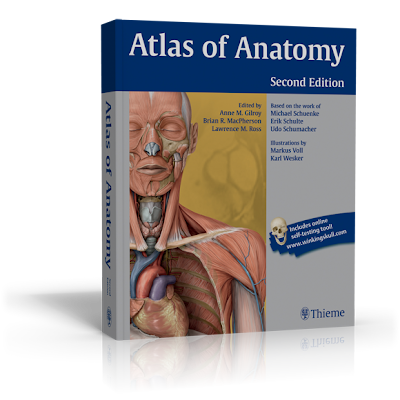What You Need to Know about Thieme’s Atlas of Anatomy
Anatomy – the first huge hurdle for many medical students to climb over. The anatomical knowledge gleaned in this first course will be used repeatedly as part of the foundation of medical knowledge. With that in mind, a solid foundation of resources is an absolute must. Frank Netter’s Atlas of Human Anatomy has been the gold standard of anatomy books for many years. Professors stand by the atlas and will expect you to memorize most, if not all, of those beautifully colored structures in the Netter plates.
That being said, it is important to introduce the Thieme Atlas of Anatomy by Gilroy. Its 2,200 beautiful images have been painstakingly drawn by Markus Voll and Karl Wesker, and appear to jump off the page. The book takes a different approach from other atlases, by starting with deep structures and working its way superficially. This allows for an understanding of the foundation of the body and how the other structures add on to it. At the end of each section, questions are posed to allow the reader to integrate the knowledge they have learned.
The largest, and only, detriment to using the Thieme atlas is that most professors still stand by the Netter atlas, and reference page numbers during lectures. To remedy this, Thieme has composed a table which compares Netter plate numbers to Thieme’s, allowing students to find similar plates.
Overall, this is a highly recommended book that many students believe far surpasses Netter in providing comprehensive and integrative anatomy knowledge to beginning anatomy students and pro’s alike.


